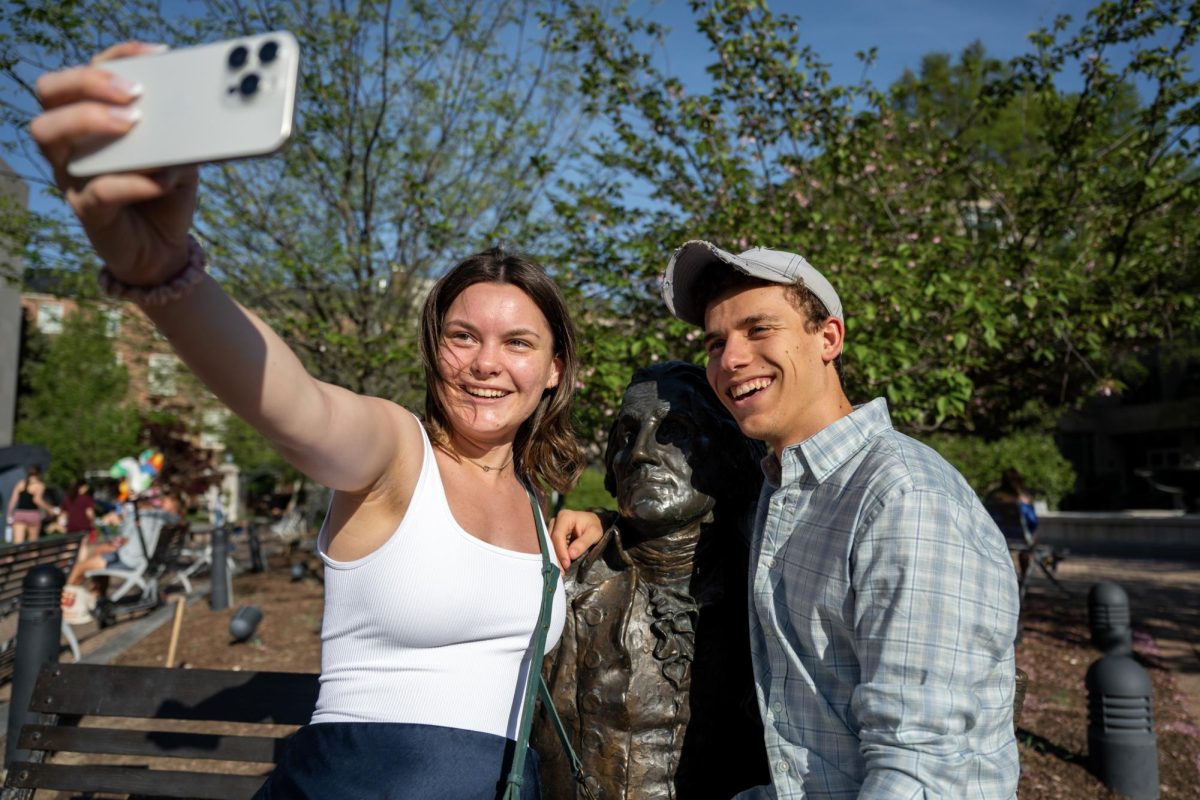Whimsical doll vignettes and vibrant folk paintings weave a tapestry that tells the story of two lives in which color and brightness bring hope to tragedy in the latest Luther W. Brady Art Gallery exhibit.
“Works by Magda Watts and Malcah Zeldis” is on display in the Media and Public Affairs building until Feb. 25 and tells the story of Watts, an Israeli woman who survived the Holocaust by trading handcrafted dolls in exchange for food, and Zeldis, a celebrated folk painter who also lived in Israel.
Watts’ artwork seems to radiate light, hope and even a sense of comedy despite the horror that surrounded the beginning of her artistic career. At 15 years old, Watts began making dolls to keep herself occupied and to trade for food while in Auschwitz.
Watts’ miniature figurines and domestic sets adorning the gallery seem to transform the space into a freeze-frame of a society of marionettes. The dolls and 3-D vignettes tell stories of life in New York City bagel shops, in synagogues and in a concentration camp.
The dollmaker greeted visitors via video from Israel at the exhibit’s opening. Sitting in front of her dollmaking supplies with a beaming smile, she explained that she wouldn’t stop working despite her age.
“I am nearly 82, but I’m still working because I don’t let my hands and my brain rest,” Watts said. “If I don’t work, I will get old.”
Zeldis, who was present for the exhibit’s opening, used images from her childhood in Detroit where she lived with her immigrant parents; her young adulthood on a kibbutz, a traditional Jewish co-operative in Israel; and memories of love affairs, motherhood, divorce and the American landscape as sources of inspiration.
“I’ve been called a storyteller with a brush,” Malcah Zeldis said. “Perhaps if I knew how to write I wouldn’t be a painter.”
Abraham Lincoln, one of the people Zeldis admires most, also appears prominently in her works.
“One of my most important subjects is Lincoln because of the simplicity of his story,” she explained. “He freed the slaves. I felt like a slave to my insecurities, of my doubts. It’s amazing that people can suffer so much and still maintain such high values.”
When they stand alone, Zeldis’ pieces are bold, bright and often depict heartfelt images of family and American life. The lively hues give a hopeful and uplifting air to scenes that depict dark experiences with poverty and the Holocaust.
“In Hebrew, the word for red is the same as the words for Adam and blood. It is mankind,” Zeldis said. “I need that colorful stimulation. I love it.”
When viewed collectively, Zeldis’ works combine to form a landscape of the painter’s life that she says enables a therapeutic process.
“By painting, I’m healing my own wounds by surrounding myself with people I admire,” she said.






